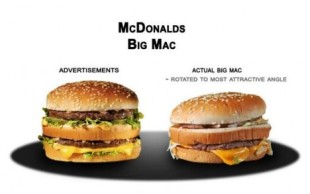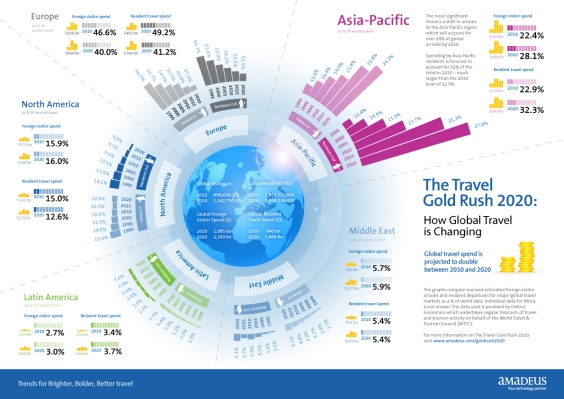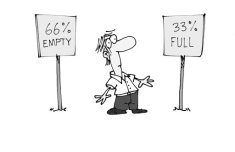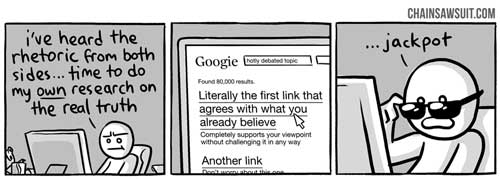One of the important tasks of a good journalist is checking whether the facts written in a story are actually true. In order to do so, the writer needs to consult the original sources. A team of three researchers, Genya van Belzen, Frank Nogarede and Corella Treure, investigated different articles from the Algemeen Dagblad (AD). Before we go to the conclusion (which is based on our own experiences), we give short summaries of the [3] checked articles.
[1] “1 op 4 kinderen in reservaat misvormd door alcoholisme“
This article aims to inform the reader of the severity of alcoholism in Pine Ridge reservation in South Dakota, USA. It is one of the poorest areas in the United States. One in four children is born with fetal alcohol syndrom (FAS). FAS is a condition in which children appear abnormal. Some have growth disorders for example. Moreover, the children can have mental problems as well. For instance, hyperactive or attention disorders and learning disabilities are some of the effects.
In a town just outside of Pine Ridge is Whiteclay situated. With a population of fourteen people and four liquor stores they sell more than four million cans of beer yearly. The people from the reservation buy their alcohol in Whiteclay as the law in Pine Ridge forbids alcohol.
After fact checking  this story, some statements seemed false. Last year, Whiteclay only sold 3.9 million cans of beer. The fact-checker recalculated this by consulting the original source. Moreover, the population in both Whiteclay and Pine Ridge were not even close to what the article reported. The most striking finding was that the Tribe government in Pine Ridge lifted the alcohol ban back in 2013. After contacting the journalist, he replied that he was not aware of the new law. He said that the amount of sold cans was irrelevant and that it did not take away the problematic situation. We believe it does decrease the impact of the article.
this story, some statements seemed false. Last year, Whiteclay only sold 3.9 million cans of beer. The fact-checker recalculated this by consulting the original source. Moreover, the population in both Whiteclay and Pine Ridge were not even close to what the article reported. The most striking finding was that the Tribe government in Pine Ridge lifted the alcohol ban back in 2013. After contacting the journalist, he replied that he was not aware of the new law. He said that the amount of sold cans was irrelevant and that it did not take away the problematic situation. We believe it does decrease the impact of the article.
[2] “Blade Runner Pistorius veroordeeld voor moord“
This article concerns Oscar Pistorius, the famous ‘Blade Runner’ from South Africa who won different sprints while having below-knee amputees. But, the news article from AD captures a more negative side of ‘the fastest man with no legs’.
The article states that Oscar Pistorius is sentenced for murdering his girlfriend, and that this rejects the earlier sentence of culpable homicide. It is explained that Oscar Pistorius killed his girlfriend Reeva Steenkamp with four shots in February 2013. Oscar admitted that he had fired the gun, but the reasons for his action were being questioned because he said to think that Reeva was an intruder. There are several  reasons to question the confession of Oscar Pistorius (e.g. why did he immediately thought that the person in the toilet was an intruder instead of his girlfriend?), but there is also reason to question this news article. Reasons for mistrust are the limited usage of sources.
reasons to question the confession of Oscar Pistorius (e.g. why did he immediately thought that the person in the toilet was an intruder instead of his girlfriend?), but there is also reason to question this news article. Reasons for mistrust are the limited usage of sources.
During the fact checking process, every statement was double-checked by use of reliable sources. Except for one statement, all information given was true and accurate. One sentence (i.e., ”Pistorius doodde zijn vriendin Reeva Steenkamp in februari 2013 met vier schoten door de deur van de badkamer”) was not accurate. The article reported that the shots were fired through the bathroom door, but Reeva Steevkamp was in the toilet of the bathroom during the incident. Hence, shots were fired through the door of the toilet instead of the bathroom door. One may say that this is debatable, but a door in front of a toilet is rather called a toilet door than a bathroom door.
[3] “Britse spermadonor verwekt 46 baby’s in twee jaar tijd“
This article was about Declan Rooney, a sperm donor, who conceived 46 children the past two years. He also has 8 children of his own with 4 different women. He offers his services without the intervention of a sperm bank, but via a website, Facebook and even an app.
Starting from the source, there were some doubts about the article, because the Mail Online was the only article that was used. Moreover, the Mail Online does not appear as a very credible and trustworthy news source organization, since it especially publishes gossip related news. Besides that, the article talks about experts without any references about who these experts are.
From there on, we started the fact checking process and searched for every article that said something about this particular news. We checked every fact with different sources and also searched for the website of Declan Rooney. He hosted this website under the name ‘Upton North’, but it was unfortunately no longer online. In total, there were four inconsistencies in this news article. The two most important findings are mentioned here. First of all, th e article stated that the sperm donor wanted to travel 300 kilometres to meet his clients. However, it was actually a radius of 50 mile which is about 80 kilometres. Second, the article reported that he also conceived some babies of his clients naturally, but this was not true because in a interview with Mail Online he denied having sex with his clients. After the fact checking process the findings were presented to the AD editors, since there was no author reported. Unfortunately they did not respond.
e article stated that the sperm donor wanted to travel 300 kilometres to meet his clients. However, it was actually a radius of 50 mile which is about 80 kilometres. Second, the article reported that he also conceived some babies of his clients naturally, but this was not true because in a interview with Mail Online he denied having sex with his clients. After the fact checking process the findings were presented to the AD editors, since there was no author reported. Unfortunately they did not respond.
Conclusion
In general we found that the Algemeen Dagblad is a medium which is quite reliable. All three of the researchers had difficulty finding an article which contained certain mistakes. On average, it took us two weeks (of hard work) to discover actual inconsistencies.
However, we argue that this medium often lacks reliable sources to support their claims. For instance, in the Pine Ridge article the journalist wrote many ungrounded statements such as: “Mothers give up their children often” and “There is a lot of alcoholism”. Furthermore, the three articles were almost exact copies of previously written stories by other (foreign) websites. Therefore, we can conclude that these journalist might have forgotten about the fact checking process. According to us, this is part of being a journalist and we consider this being “lazy” if it is not been done properly. However, even though we couldn’t find many mistakes on the AD, they were still present. These mistakes were found in the sources used by the AD as well.
Overall, we conclude that the Algemeen Dagblad is a reliable news website but the reader should stay critical as their referral to original sources remain absent. We understand that the AD’s journalists need to produce quantity, but this should not go at the expense of the quality of the article. We advise the journalists to not simply copy an article, but look closely and research whether the statements in other articles are actually true.







 articles or previous theories, they should be cautious. To indicate if an article is adequate, researchers could look for bad and good signs.
articles or previous theories, they should be cautious. To indicate if an article is adequate, researchers could look for bad and good signs. nal would agree to publish it no matter if the results are non-significant. I do think that the latter should have some other requirements to uphold the quality of research papers though.
nal would agree to publish it no matter if the results are non-significant. I do think that the latter should have some other requirements to uphold the quality of research papers though. these differences were caused by marijuana use (because it even couldn’t show causality because of the study’s design). In this sense, journalists should be critical and more skeptical and not just write something that is exciting.
these differences were caused by marijuana use (because it even couldn’t show causality because of the study’s design). In this sense, journalists should be critical and more skeptical and not just write something that is exciting.
 ng data from that. Eric Postma mentioned that faces, emotions and objects can be recognized in images. If Facebook starts using this technique, more questions could be raised with regards to privacy and ethics.
ng data from that. Eric Postma mentioned that faces, emotions and objects can be recognized in images. If Facebook starts using this technique, more questions could be raised with regards to privacy and ethics.

